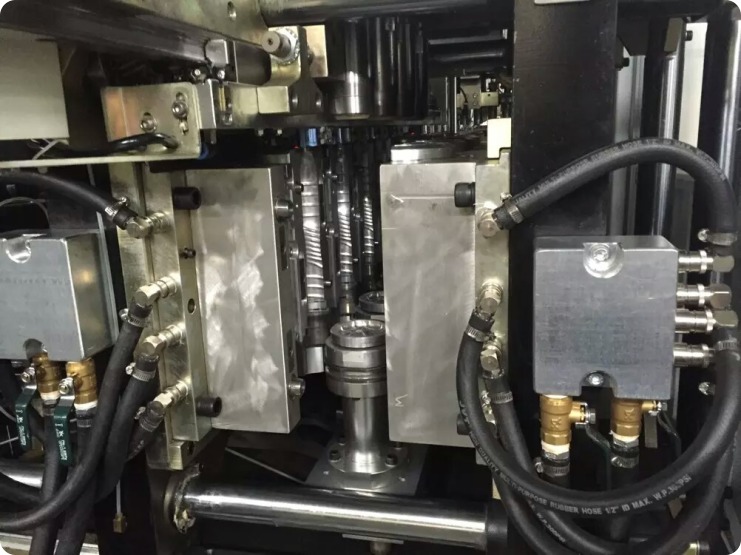Aluminum
High thermal conductivity, light weight,ductility, and excellent machining characteristics make aluminum an obvious choice for many blow mold applications. While the alloying elements usually are added to enhance its ability to be cast and machined do not seriously impair its heat conductivity. Wear resistance has been rated as poor, but some of the high strength aluminum alloys such as 6061 and 7075 have been used successfully in those areas of a mold which come in contact with the plastics and are subject to wear.
Minor repair of dents or nicks to mold cavity edges can usually be made by peening or by mechanically moving material into depressions. The amount of material movement is limited by its ductility which varies with the different alloys of aluminum. Where mold construction conditions permit, some repairs can be made by inlaying pieces of similar aluminum and mechanically fastening them in place. This type of repair is more desirable than welding in that no heat is involved to impair the strength of the aluminum.. For major repairs, aluminum can be successfully welded,but as a result of this process the aluminum becomes annealed thus losing much of its hardness and compressive strength. In consideration of aluminum’s low density of .097 lb/cu in. and its price of $3.50.to $5.00 per lb in 1986,it is one of the lowest cost blow mold materials.
Zinc
Zinc or the many commercial formulations of zinc alloy have been widely used for molds, primarily for the ease with which they can be cast. Although its thermal conductivity is lower than that of aluminum or beryllium copper, assurance of sound castings precludes the possibility of reduction in conductivity due to porous sections. Porous castings must be avoided for best thermal transfer. It is therefore possible to use zinc for molds having widely drying thickness of wall section which are not practical with other basic Materials that can easily develop porous sections in the heavy areas.
The wear resistance of zinc is only fair. This characteristic probably compares equally with aluminum, such as 2024. Molds have been found to show consequential wear in the areas where the plastics material is squeezed between the mold faces. The resistance of zinc to wear does not compare favorably with that of beryllium copper. Wear such as described above is normally corrected by removing a minimum amount of material from the mold parting faces. Material may be added to the mold to facilitate repairs by standard gas or Heliarc welding and can be displaced by peening or staking.
Zinc has the lowest price per pound, and even though its density runs a close second to beryllium copper, its net cost for mold work is the most favorable. A lower mold, cost is also reflected by the ease with which this material can be machined. As in the case of beryllium copper, weight is an important factor that must be considered in comparison with aluminum.
Steel
Steel has not been a popular material for extrusion blow molds due to its relatively low thermal conductivity and its poor resistance to corrosion. For injection blow molds, however, a variety of prehardened and stainless steels are used quite extensively.

